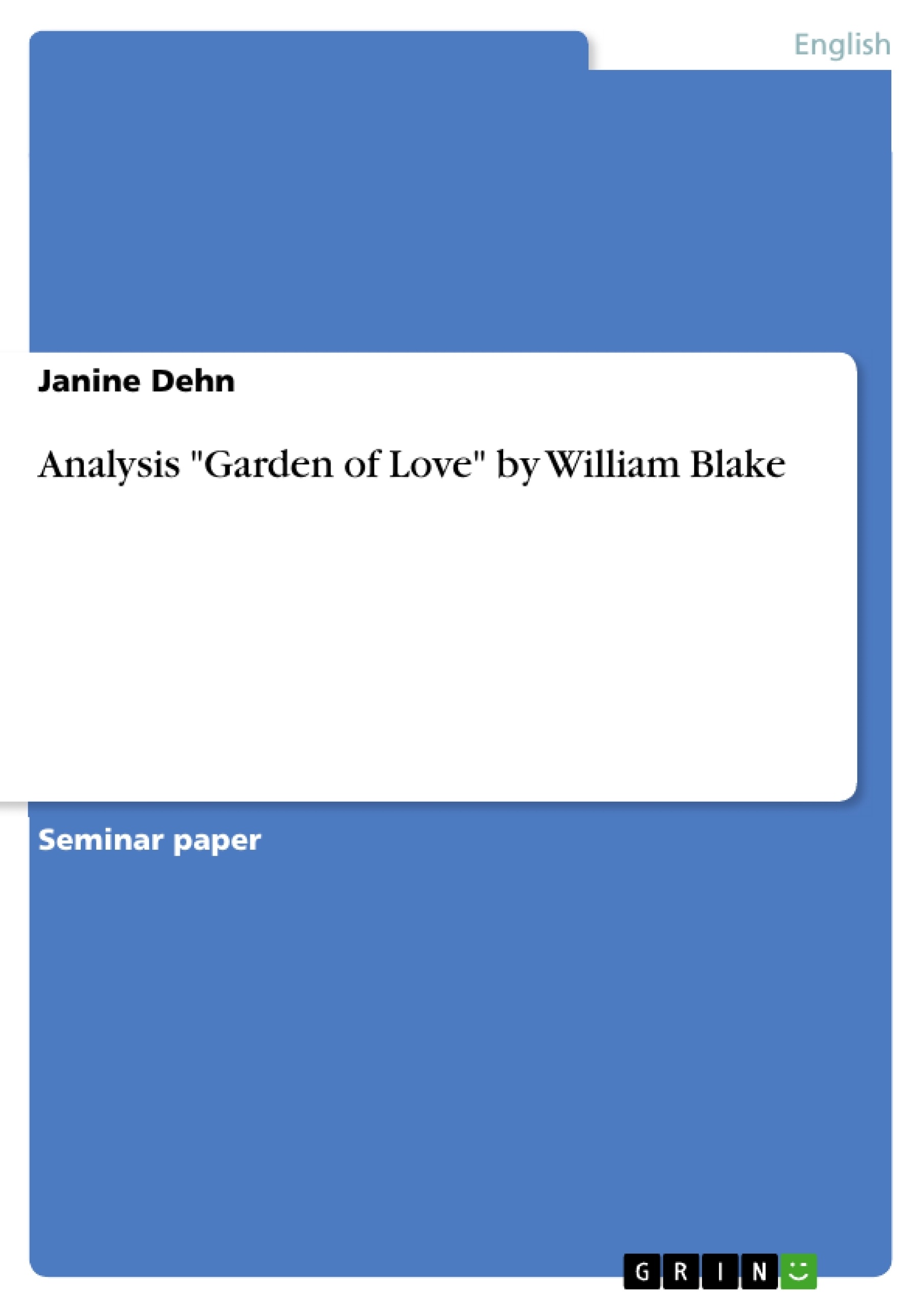„Both read the Bible day and night;
but you read black where I read white." William Blake
I’d like to start my analysis of William Blake’s “The Garden of Love” with those lines by William Blake. He refers to the way he’s reading the bible compared to the way the church is interpreting it. I think that this quotation reflects the contradictions and ambiguous relations between William Blake and the Church of England. Or rather, the way the Church of England was interpreting the Bible and how they wanted the Bible to be read and comprehended by common people. This is connected to the poem, which is a criticizing the Church of England.
“The Garden of Love” was published in 1794 as part of the “Songs of Experience”.
Table of Contents
- Introduction
- Analysis of "The Garden of Love"
- Initial Observations and Contradictions
- Structure and Emotional Progression
- Critique of the Church
- Formal Elements: Rhyme, Meter, and Style
- Imagery and Symbolism
- Conclusion (Excluded from this preview)
Objectives and Key Themes
This analysis aims to explore William Blake's poem "The Garden of Love," examining its structure, thematic elements, and stylistic devices. The analysis avoids revealing major conclusions or spoilers from the later sections of the original text.
- The contrast between idyllic imagery and the reality of religious repression.
- Blake's critique of the Church of England and its interpretation of the Bible.
- The relationship between the poem's formal structure (meter, rhyme, style) and its emotional progression.
- The symbolic meaning of key images within the poem.
- The poem's expression of anger, dismay, and unfulfilled desires.
Chapter Summaries
Introduction: This section introduces the poem and the context of Blake's work. It highlights the initial observation of the contradictions within the poem and the author's intention to analyze those contradictions.
Analysis of "The Garden of Love": Initial Observations and Contradictions: This section explores the poem's opening lines, emphasizing the speaker's discovery of a transformed garden. The initial peaceful scene gives way to a feeling of dismay and anger. A contradiction is noted between the peaceful setting and the repressive religious institution represented by the chapel.
Analysis of "The Garden of Love": Structure and Emotional Progression: The analysis here focuses on the poem's structure, examining how the emotional tone shifts across the stanzas and the use of stylistic devices to enhance the expression of negative emotions. The connection between formal elements and emotional expression is noted.
Analysis of "The Garden of Love": Critique of the Church: This part delves into the poem's critique of the Church of England and its doctrines. The speaker's resentment toward the church's restrictive practices is highlighted. The historical context of 18th-century England is touched upon.
Analysis of "The Garden of Love": Formal Elements: Rhyme, Meter, and Style: This section examines the poem's formal elements, including rhyme scheme, meter, and the use of various stylistic devices such as assonance, alliteration, anaphora, and consonance. The irregular meter and its relationship to the shifting emotions are discussed.
Analysis of "The Garden of Love": Imagery and Symbolism: The concluding analytical section explores the symbolic meaning of key images, such as the garden, chapel, priests, flowers, briars, tombstones, and graves. The significance of the "briar" in relation to the crown of thorns is mentioned.
Keywords
William Blake, The Garden of Love, Songs of Experience, Church of England, religious critique, idyllic imagery, repression, formal elements, stylistic devices, assonance, alliteration, anaphora, meter, rhyme, symbolism, imagery.
- Quote paper
- Janine Dehn (Author), 2006, Analysis "Garden of Love" by William Blake, Munich, GRIN Verlag, https://www.grin.com/document/125685




